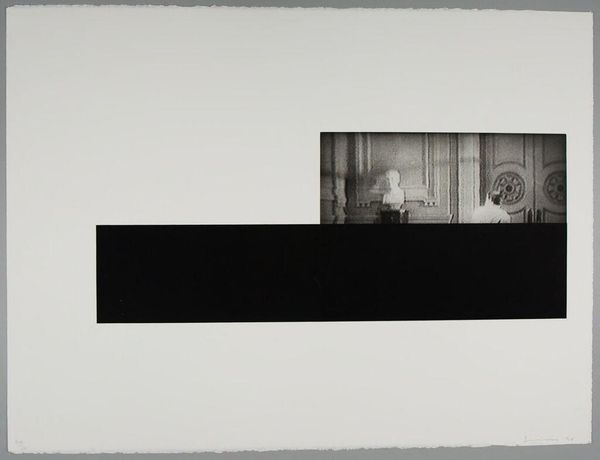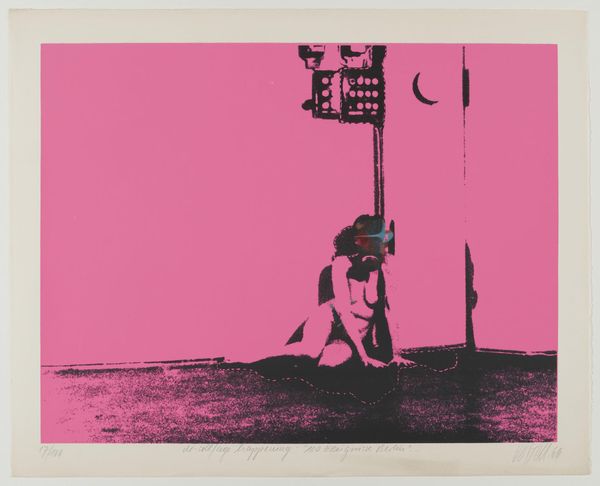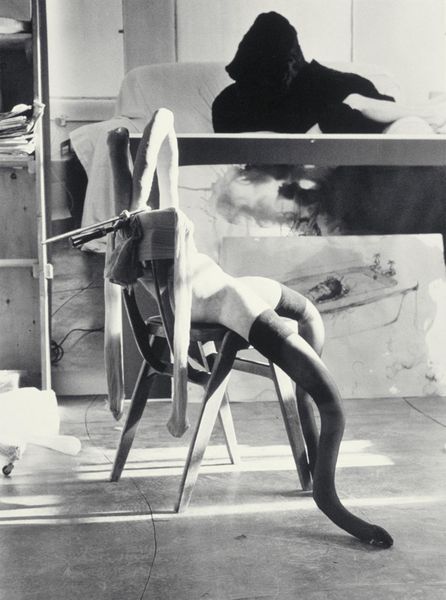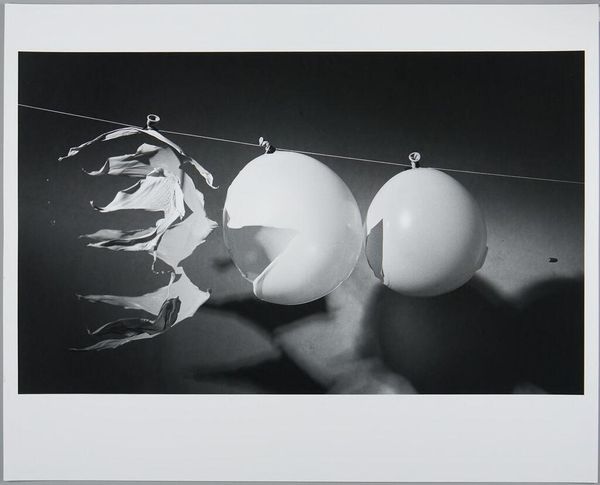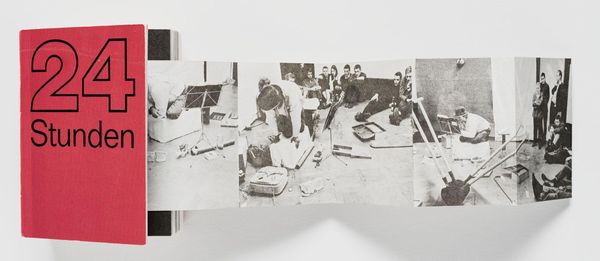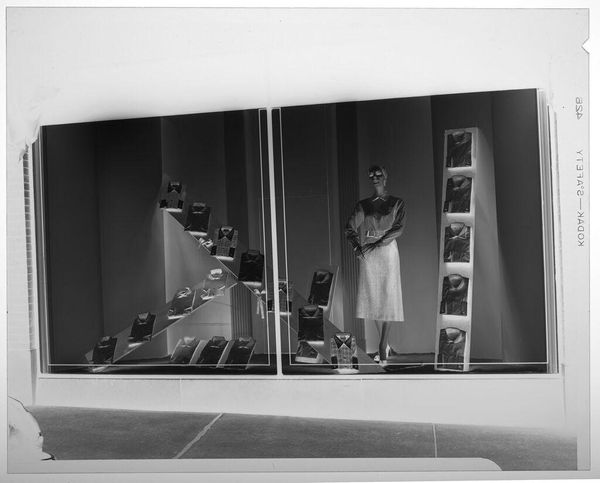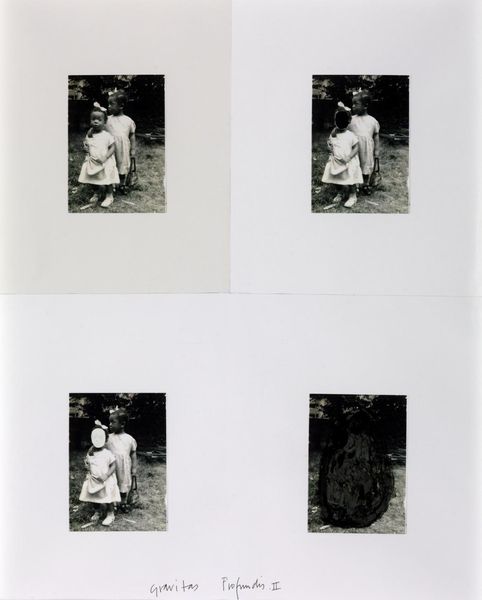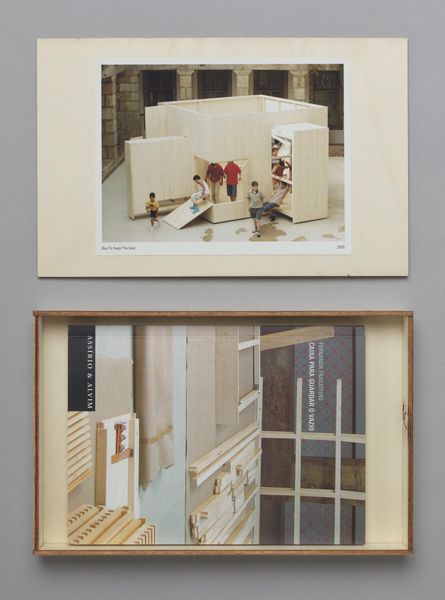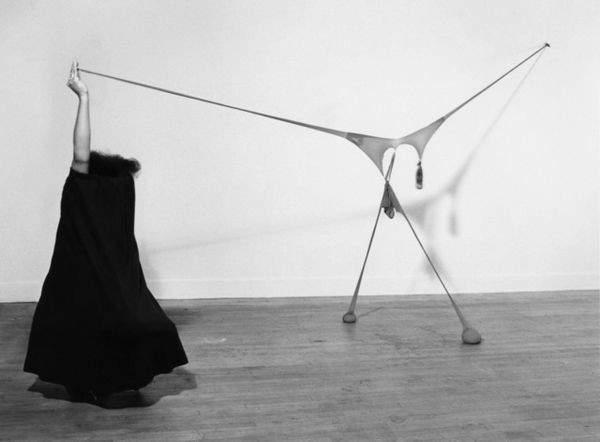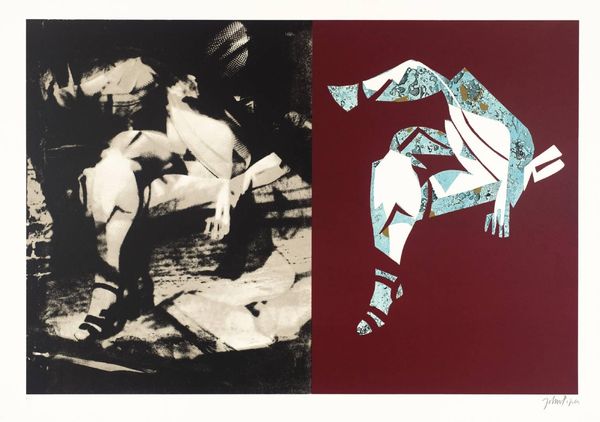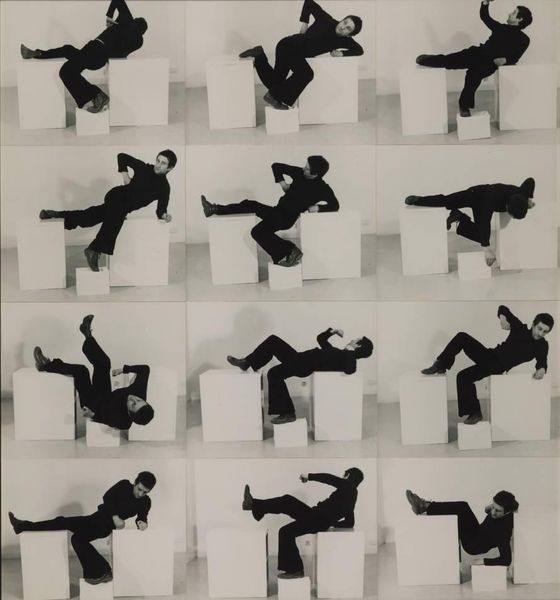
Dimensions: frame (each): 1090 x 761 x 50 mm
Copyright: © Charles Ray | CC-BY-NC-ND 4.0 DEED, Photo: Tate
Editor: Charles Ray's "Plank Piece I-II" presents us with two framed black and white photographs of a figure seemingly embedded within architecture, challenging our perception of space and form. How might we interpret the symbolic weight of this corporeal distortion? Curator: Indeed. Think of these images as modern-day icons, where the figure, the plank, and the wall operate as potent symbols. The figure, forced into the architecture, speaks to a sense of confinement, a struggle against pre-ordained structures. Does this resonate with feelings of alienation prevalent in contemporary society, perhaps? Editor: It certainly evokes a feeling of unease. Is the plank serving as a means of support or further entrapment? Curator: Precisely. The plank is an ambiguous symbol, potentially offering support, yet simultaneously acting as a barrier, a tool of further constraint. It begs the question: how much do we rely on external structures for support, even when they may limit us? Editor: This has really given me a new perspective on how we interact with our environment. Thank you. Curator: My pleasure, it's about deciphering the symbols that shape our perception.
Comments
Join the conversation
Join millions of artists and users on Artera today and experience the ultimate creative platform.
tate 6 months ago
⋮
Plank Piece I–II consists of two large framed black and white photographs in portrait format. Both images show a man pinned against a wall by a long wooden plank. He has long hair and wears dark clothes and heavy workman’s boots. The interior space shown in the photographs is sparse, with a plain carpet and white walls. In the first photograph, shown on the left, strip lighting and what appears to be a trestle table can be seen in the background. In this photograph the man is upside-down, facing the wall and stretching his arms towards the floor so that most of his body is pressed against the wall. The plank meets the man’s body at the back of his knee joints, causing his legs to bend away from the wall at a roughly forty-five degree angle. In the second photograph the man faces away from the wall with his feet hanging down towards the floor. The plank meets the man’s body at his abdomen, causing him to slump over it with his arms dangling down. The man depicted in these images is the artist, Charles Ray. The photographs were produced in an edition of seven with two artist’s proofs.

